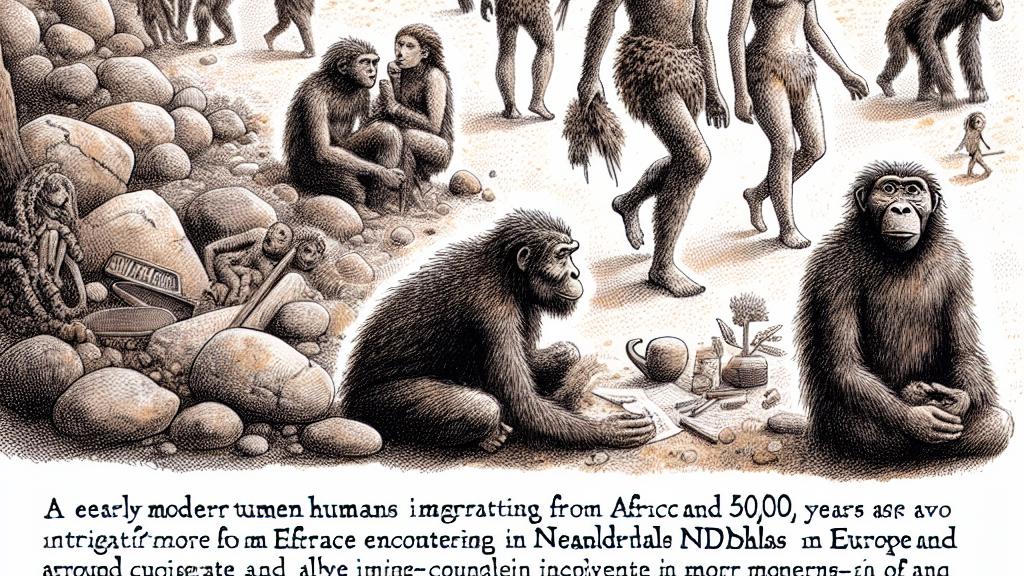Exploring the Connection Between Ancient Europeans and Neanderthals
Overview
- Recent studies uncover a profound genetic link between ancient Europeans and Neanderthals.
- Genetic research reveals how early interbreeding shaped modern human traits and diversity.
- Crucial archaeological findings from Czechia and Germany shed light on our ancestral roots.

The Genetic Connection
Imagine this: early modern humans, driven by curiosity and survival, migrated from Africa around 45,000 years ago, only to encounter the enigmatic Neanderthals in Europe. This meeting led to significant intermingling, resulting in about 2-3% Neanderthal DNA that persists in all non-African modern genomes today—a tangible connection to our distant cousins! Key archaeological sites, notably Zlatý kůň in Czechia and Ilsenhöhle in Ranis, Germany, have played a vital role in unveiling this narrative. The discoveries made here not only deepen our understanding of human evolution but also evoke a sense of wonder about the lives of those ancient peoples—who were they, and what stories did their genes carry?
Key Sites and Findings
At Zlatý kůň, researchers uncovered an exceptionally well-preserved skull, which sparked excitement across the scientific community. Meanwhile, in Ranis, fragments of bones spoke volumes about a distinct cultural period, characterized by the Lincombian-Ranisian-Jerzmanowician tradition. Through comprehensive genetic analyses, researchers found striking familial connections among individuals from these sites, including a mother and daughter duo, each associated with a rich heritage of tool-making. Picture them crafting intricate stone tools together, surrounded by the vibrant steppe of ancient Europe, sharing not just resources but stories and traditions between generations. Their intertwined fates tell a vivid story of adaptation and resilience, as they navigated the challenges of their environment while remaining connected to one another.
Implications of Admixture
The implications of this genetic research are nothing short of fascinating! While previous studies painted a picture of extensive interbreeding between early modern humans and Neanderthals, the latest findings from Zlatý kůň and Ranis suggest a more intricate scenario. Surprisingly, evidence points to minimal genetic exchange between these populations. What does this mean? It challenges our previous notions of how these groups interacted. Were they rivals competing for the same resources, or did they foster a collaborative spirit? Perhaps they shared knowledge while maintaining distinct identities. This revelation invites us to delve deeper into the complexities of human relationships in ancient times. By reconsidering these dynamics, we unveil a richer narrative—a tale of coexistence, adaptation, and the continuous evolution of humanity!

Loading...